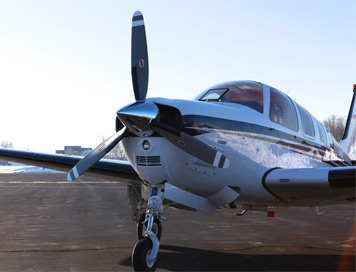Questions About Aircraft De-Icing | Ice Shield
Frequently Asked Questions About Ice Shield
Ice Shield gets frequent questions about all de-icing and aircraft. Below are some common questions and answers about aircraft de-icing!
The deicing process differs depending on the type of aircraft. Ice Shield utilizes pneumatic de-icing for wing boots and anti-icing electro-thermal for propeller boots. For all additional questions on other types of de-icing and to find in-depth process steps, refer to the FAA's Standardized International Aircraft Ground Deice Program (SIAGDP) document.
Q: What is aircraft deicing?
Aircraft deicing is the process of removing ice, snow, or frost from the surface of an aircraft. The deicing process differs depending on the type of aircraft. Ice Shield utilizes pneumatic de-icers for wing boots and electro-thermal anti-icing hardware for propeller boots. Ice Shield de-icers are made of rubber polymers.
Q: Is there a way to deice aircraft while in flight?
Yes. Aircraft equipped with pneumatic wing boots can control tubes of air in the boots that inflate and deflate to remove ice from the surface of the aircraft. When triggered by the pilot, the de-ice boot inflates to break any ice on the leading-edge surface. Once the ice is broken, the wing boots deflate allowing the ice to fly off wing.
Anti-icing propeller boots and engine inlets are heated to ensure that no ice builds up on the propeller or engine inlet.
Q: Are Ice Shield Products Flight In Known Ice (FIKI) certified?
No. SMR offers non-hazard de-ice systems. The FIKI certification is designated by the airframe manufacturer, not by the manufacturer of the de-ice product. It is strongly advised to avoid icing conditions whenever possible. The cost of FIKI certifications is substantially higher, and according to some surveys conducted by SMR, customers are more interested in avoiding icy conditions than purposely entering them.
Q: How are deicing products applied?
Pneumatic wing and electro-thermal propeller boots are installed with different types of adhesives depending on the type of airplane. Ice Shield wing boots can be applied with either a glue adhesive or pressure sensitive adhesive that is pre-applied on the boot. Other de-icing products can be sprayed on the aircraft prior to flight, like our Aeroguard surface technology to better protect your parts from the elements
Q: How long does it take to deice an aircraft wing?
Ice Shield’s pneumatic wing boots cycle in intervals of ~6 seconds on and ~54 seconds off.
Q: What deicing components of the aircraft does Ice Shield support?
Ice Shield supports the following aircraft components:
- Wings
- Vertical and horizontal tail
- Propellers
- Engine inlets
Q: Do wing boots keep ice from accumulating on the places surface after initial removal?
After the initial deicing process finishes cycling, it may be required to fire the boots multiple times depending on how icy the conditions the aircraft is experiencing are.
For all additional questions on other types of de-icing and to find in-depth process steps, refer to the FAA's Standardized International Aircraft Ground Deice Program (SIAGDP) document.
Want to learn more about how Ice Shield can help you get out of ice this winter? Contact us at 800-767-6899.


 Search by Plane
Search by Plane
